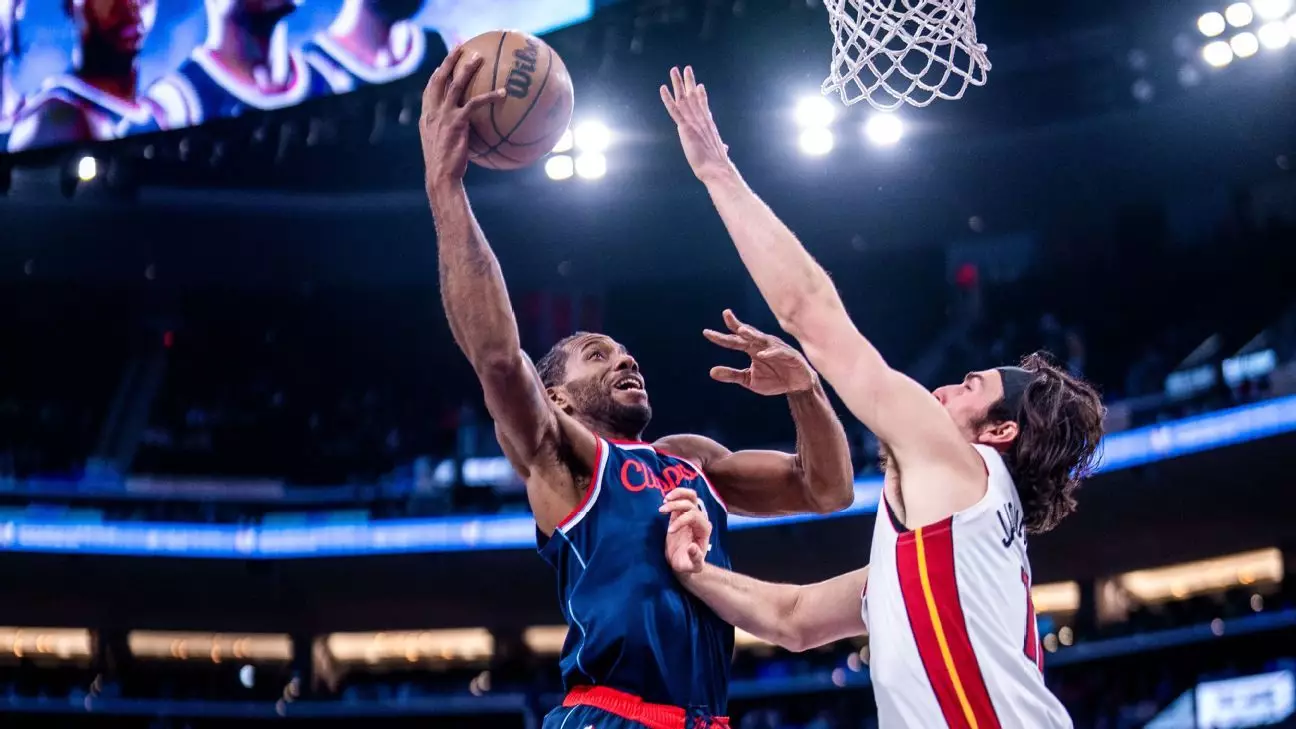Kawhi Leonard, a name synonymous with basketball excellence, recently made his long-awaited return to the Los Angeles Clippers after a significant break due to injury rehabilitation. However, unlike the rushed comebacks that often plague professional athletes, Leonard has taken a notably patient approach to re-entering the competition. “I’m taking my time,” he asserted, reflecting a wisdom earned through previous experiences that have taught him the importance of measured progress. The often chaotic nature of sports can create a pressure cooker environment, compelling players to perform at full throttle before they’re physically ready. Leonard, however, is determined to avoid the pitfalls of hurried recovery that previously led him to prolonged periods on the bench.
In his most recent outing—a convincing 109-98 victory against the Miami Heat—Leonard scored just six points and grabbed five rebounds in 21 minutes of play. Notably, he remained benched during the fourth quarter, a decision that speaks volumes about the Clippers’ strategy for managing their star player. While the statistics may not reflect his elite capabilities, Leonard’s seasoned presence on the court provides a stabilizing influence for a team that has been characterized by fluctuating performances this season, currently holding a 21-17 record and sitting sixth in the Western Conference.
His teammates, too, recognize the necessity of easing Leonard back into the flow of the game. James Harden noted the importance of allowing the forward to acclimatize to both the physical demands of competitive basketball and the team’s overall strategy. The Clippers had established a rhythm previously, going 19-15 prior to Leonard’s return, and integrating him into this established dynamic is imperative for both his success and that of the team.
The success of Leonard’s comeback hinges largely on the state of his surgically repaired right knee, which has been a point of concern throughout his recent seasons. With a combined total of 26 points and 10 rebounds across three games, it’s clear that Leonard is still fine-tuning his physical condition and seeking to regain the burst that made him one of the league’s elite players. While numbers may not yet illustrate his full capabilities, Leonard himself expresses confidence: “I feel good and as long as I’m feeling good on the court, I’m able to move quickly,” he mentioned, demonstrating a clear focus on the gradual restoration of his effectiveness.
Adding depth to his narrative of careful perseverance, Leonard’s absence from a recent game in Denver due to wildfires in the Los Angeles area showcased his priorities beyond basketball. Ensuring the safety and well-being of his family took precedence during a chaotic time, underlining that his journey through recovery is not just about his performance on the court, but also about personal circumstances that require attention. His statement, “As we know, everybody is not OK,” serves as a sobering reminder of the trials faced by many.
Kawhi Leonard’s return to competitive basketball is a thoughtful blend of patience, strategy, and personal responsibility. With the support of his team and a commitment to his physical health, he aims to regain his form without succumbing to the pressures that often force athletes to prioritize immediate returns over long-term sustainability. As he continues to fit back into the Clippers’ puzzle, fans and analysts alike eagerly anticipate the moment when Leonard can once again showcase the brilliance that has defined his storied career.


Leave a Reply